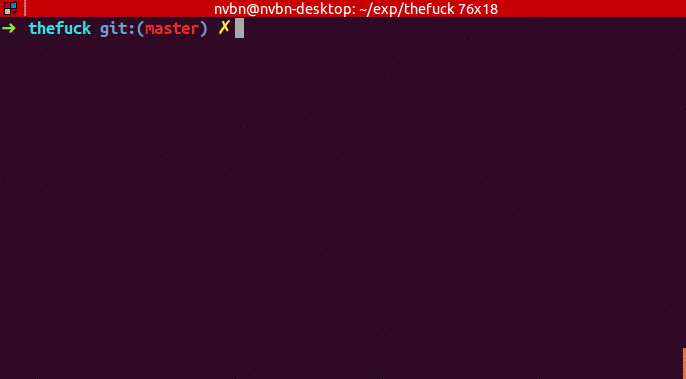一、前言
这篇文章之前是给新人培训时用的,大家觉的挺好理解的,所以就分享出来,与大家一起学习。如果你学过一些python,想用它做些什么又没有方向,不妨试试完成下面几个案例。
二、环境准备
安装requests lxml beautifulsoup4 三个库(下面代码均在python3.5环境下通过测试)
pip install requests lxml beautifulsoup4

三、几个爬虫小案例
- 获取本机公网IP地址
- 利用百度搜索接口,编写url采集器
- 自动下载搜狗壁纸
- 自动填写调查问卷
- 获取公网代理IP,并判断是否能用、延迟
3.1 获取本机公网IP地址
利用公网上查询IP的借口,使用python的requests库,自动获取IP地址。
import requests r = requests.get("http://2017.ip138.com/ic.asp") r.encoding = r.apparent_encoding #使用requests的字符编码智能分析,避免中文乱码 print(r.text) # 你还可以使用正则匹配re模块提取出IP import re print(re.findall("\d{1,3}\.\d{1,3}\.\d{1,3}\.\d{1,3}",r.text))
3.2 利用百度搜索接口,编写url采集器
这个案例中,我们要使用requests结合BeautifulSoup库来完成任务。我们要在程序中设置User-Agent头,绕过百度搜索引擎的反爬虫机制(你可以试试不加User-Agent头,看看能不能获取到数据)。注意观察百度搜索结构的URL链接规律,例如第一页的url链接参数pn=0,第二页的url链接参数pn=10.... 依次类推。这里,我们使用css选择器路径提取数据。
import requests from bs4 import BeautifulSoup # 设置User-Agent头,绕过百度搜索引擎的反爬虫机制 headers = {'User-Agent': 'Mozilla/5.0 (X11; Linux x86_64; rv:52.0) Gecko/20100101 Firefox/52.0'} # 注意观察百度搜索结构的URL链接规律,例如第一页pn=0,第二页pn=10.... 依次类推,下面的for循环搜索前10页结果 for i in range(0,100,10): bd_search = "https://www.baidu.com/s?wd=inurl:/dede/login.php? Linux x86_64) AppleWebKit/537.36 (KHTML, like Gecko)", "Cookie": ".ASPXANONYMOUS=iBuvxgz20wEkAAAAZGY4MDE1MjctNWU4Ni00MDUwLTgwYjQtMjFhMmZhMDE2MTA3h_bb3gNw4XRPsyh-qPh4XW1mfJ41; spiderregkey=baidu.com%c2%a7%e7%9b%b4%e8%be%be%c2%a71; UM_distinctid=1623e28d4df22d-08d0140291e4d5-102c1709-100200-1623e28d4e1141; _umdata=535523100CBE37C329C8A3EEEEE289B573446F594297CC3BB3C355F09187F5ADCC492EBB07A9CC65CD43AD3E795C914CD57017EE3799E92F0E2762C963EF0912; WjxUser=UserName=17750277425 LastCheckUpdateDate=1; LastCheckDesign=1; DeleteQCookie=1; _cnzz_CV4478442=%E7%94%A8%E6%88%B7%E7%89%88%E6%9C%AC%7C%E5%85%8D%E8%B4%B9%E7%89%88%7C1521461468568; jac21581199=78751211; CNZZDATA4478442=cnzz_eid%3D878068609-1521456533-https%253A%252F%252Fwww.baidu.com%252F%26ntime%3D1521461319; Hm_lvt_21be24c80829bd7a683b2c536fcf520b=1521461287,1521463471; Hm_lpvt_21be24c80829bd7a683b2c536fcf520b=1521463471", } for i in range(0,500): choice = ( random.randint(1, 2), random.randint(1, 4), random.randint(1, 3), random.randint(1, 4), random.randint(1, 3), random.randint(1, 3), random.randint(1, 3), random.randint(1, 3), random.randint(1, 3), random.randint(1, 3), ) data["submitdata"] = data["submitdata"] % choice r = requests.post(url = url,headers=header,data=data) print(r.text) data["submitdata"] = "1$%s}2$%s}3$%s}4$%s}5$%s}6$%s}7$%s}8$%s}9$%s}10$%s"当我们使用同一个IP提交多个问卷时,会触发目标的反爬虫机制,服务器会出现验证码。


我们可以使用X-Forwarded-For来伪造我们的IP,修改后代码如下:
import requests import random url = "https://www.wjx.cn/joinnew/processjq.ashx?submittype=1 Linux x86_64) AppleWebKit/537.36 (KHTML, like Gecko)", "Cookie": ".ASPXANONYMOUS=iBuvxgz20wEkAAAAZGY4MDE1MjctNWU4Ni00MDUwLTgwYjQtMjFhMmZhMDE2MTA3h_bb3gNw4XRPsyh-qPh4XW1mfJ41; spiderregkey=baidu.com%c2%a7%e7%9b%b4%e8%be%be%c2%a71; UM_distinctid=1623e28d4df22d-08d0140291e4d5-102c1709-100200-1623e28d4e1141; _umdata=535523100CBE37C329C8A3EEEEE289B573446F594297CC3BB3C355F09187F5ADCC492EBB07A9CC65CD43AD3E795C914CD57017EE3799E92F0E2762C963EF0912; WjxUser=UserName=17750277425 LastCheckUpdateDate=1; LastCheckDesign=1; DeleteQCookie=1; _cnzz_CV4478442=%E7%94%A8%E6%88%B7%E7%89%88%E6%9C%AC%7C%E5%85%8D%E8%B4%B9%E7%89%88%7C1521461468568; jac21581199=78751211; CNZZDATA4478442=cnzz_eid%3D878068609-1521456533-https%253A%252F%252Fwww.baidu.com%252F%26ntime%3D1521461319; Hm_lvt_21be24c80829bd7a683b2c536fcf520b=1521461287,1521463471; Hm_lpvt_21be24c80829bd7a683b2c536fcf520b=1521463471", "X-Forwarded-For" : "%s" } for i in range(0,500): choice = ( random.randint(1, 2), random.randint(1, 4), random.randint(1, 3), random.randint(1, 4), random.randint(1, 3), random.randint(1, 3), random.randint(1, 3), random.randint(1, 3), random.randint(1, 3), random.randint(1, 3), ) data["submitdata"] = data["submitdata"] % choice header["X-Forwarded-For"] = (str(random.randint(1,255))+".")+(str(random.randint(1,255))+".")+(str(random.randint(1,255))+".")+str(random.randint(1,255)) r = requests.post(url = url,headers=header,data=data) print(header["X-Forwarded-For"],r.text) data["submitdata"] = "1$%s}2$%s}3$%s}4$%s}5$%s}6$%s}7$%s}8$%s}9$%s}10$%s" header["X-Forwarded-For"] = "%s"效果图:



关于这篇文章,因为之前写过,不赘述,感兴趣直接看: 【如何通过Python实现自动填写调查问卷】
3.5 获取公网代理IP,并判断是否能用、延迟时间
这一个例子中,我们想爬取 【西刺代理】上的代理IP,并验证这些代理的存活性以及延迟时间。(你可以将爬取的代理IP添加进proxychain中,然后进行平常的渗透任务。)这里,我直接调用了linux的系统命令ping -c 1 " + ip.string + " | awk 'NR==2{print}' - ,如果你想在Windows中运行这个程序,需要修改倒数第三行os.popen中的命令,改成Windows可以执行的即可。
from bs4 import BeautifulSoup import requests import os url = "http://www.xicidaili.com/nn/1" headers = {'User-Agent': 'Mozilla/5.0 (X11; Linux x86_64) AppleWebKit/537.36 (KHTML, like Gecko) Chrome/62.0.3202.62 Safari/537.36'} r = requests.get(url=url,headers=headers) soup = BeautifulSoup(r.text,"lxml") server_address = soup.select(".odd > td:nth-of-type(4)") ip_list = soup.select(".odd > td:nth-of-type(2)") ports = soup.select(".odd > td:nth-of-type(3)") for server,ip in zip(server_address,ip_list): if len(server.contents) != 1: print(server.a.string.ljust(8),ip.string.ljust(20), end='') else: print("未知".ljust(8), ip.string.ljust(20), end='') delay_time = os.popen("ping -c 1 " + ip.string + " | awk 'NR==2{print}' -") delay_time = delay_time.read().split("time=")[-1].strip("\r\n") print("time = " + delay_time)

四、结语
当然,你还可以用python干很多有趣的事情。如果上面的这些例子你看的不是很懂,那我最后在送上一套python爬虫视频教程: 【Python网络爬虫与信息提取】 。现在网络上的学习真的很多,希望大家能够好好利用。
有问题大家可以留言哦,也欢迎大家到春秋论坛中来耍一耍 >>>点击跳转
转载请注明来自网盾网络安全培训,本文标题:《python爬虫实践教学》
- 关于我们


![[Python从零到壹] 十五.文本挖掘之数据预处理、Jieba工具和文本聚类万字详解](https://img.nsg.cn/xxl/2022/03/3d8213dc-b91d-48d5-b01b-fac2bfc01eac.png)



